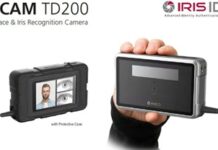
Today’s technology seems to be moving forward at light speed. Smart homes tout the promise of the Internet of Things (IoT). Cellphones do practically everything except make breakfast. Even cars are starting to drive themselves. In a world where convenience rules, there is one technology that has many of these beat: biometrics.
Imagine being able to do all of these same things, from opening your front door to making your coffee just the way you want it, without having to use any other technology. No keys to lose, no phone to remember to charge, no extra information to input — just your fingerprint, face, vein, iris or other unique identifier. Even more important, not only is it more convenient, it is often more secure and can even make (or save) money in certain cases.
Let’s take a look at some of the ways biometrics is (or will soon be) increasing the safety, convenience or revenue potential of individuals and businesses. When you think about it, biometrics is really just a way to facilitate a switch turning on or off and of making sure the user is authorized to do that. So in a factory environment, for example, potentially dangerous equipment like forklifts and heavy machinery can pose a risk to employees or visitors. Without controls, anyone can go up to that piece of equipment and turn the key. A friend of mine was recently fined $200,000 by OSHA because he had an ignition key in his bailer. Anywhere there is a dangerous piece of equipment, biometrics can easily prevent unauthorized access.
In the home environment, a different kind of danger presents itself — kids watching programs that are not suitable. There is talk of one day putting biometrics into remote controls that would allow parents to limit what their kids have access to. Also in the home, there are smart locks today that allow someone to open the door remotely via an app. But how much simpler would it be to simply enroll the kids or grandma into the biometric door lock and not have to worry about not being near your phone when someone needs to get in? It would eliminate that extra step, while actually increasing security.
Having a biometric reader on a residential door also falls under the umbrella of convenience (no more keys!). But there are many more applications that can be made even more convenient than they already are by including biometrics. Smartphones themselves are a perfect example. Already a technology that users find extremely convenient, the leading smartphones now include fingerprint biometrics as an easy and better alternative to a password, pattern or no security at all.
Biometric technology is also being incorporated into some cars for keyless entry. How long before biometrics is what starts the car, making your car both ultra-convenient and virtually burglar-proof? Really, anything that requires a memory setting is a prime candidate for biometrics. I have even heard of a coffee maker currently on the market that remembers exactly how you like your coffee based on your fingerprint.
In commerce there has always been the term “middle man.” Technologically-speaking, biometrics eliminates that middle man — whether that is a physical key, pin code, ID card or mobile device — when it comes to revenue savings or producing.
Real world examples today include time and attendance, which is the No. 1 application for biometrics right now as it prevents “buddy punching.” Labor is often one of the most expensive components of running a business, so paying employees for time they haven’t actually worked means lost revenue.
While this has been a trend for several years, biometrics has other potential revenue generating or saving applications both available now and coming in the not-so-distant future.
Here are a few of the possibilities
1. Facilities that have recyclables often lose money in potential revenue. Many states have can and bottle returns, for example; but how many employees just throw these into the garbage without thinking? Biometrics can be used to filter the garbage and recycling, perhaps even tied to an employee incentive program for most recycling in a month.
2. Retail stores already use video analytics and heat mapping to collect information on shoppers’ behaviors. What if, by facial recognition, they could also recognize frequent shoppers and be able to greet them by name and direct them to specific areas of the store they know that shopper might be interested in due to their previous shopping habits?
3. Outside of the U.S. there is a growing trend to replace bank cards with biometrics, helping to eliminate theft and verify identify (while also increasing convenience for the user). Japan uses palm vein readers in many of their ATMs. And one very large ATM manufacturer will soon be using our fingerprint sensor in their next generation ATMs in India and Pakistan. The U.S. is still very card-centric, but when biometrics start gaining popularity in the rest of the world, the trend will eventually work its way to us.
These are just a few of the ways biometrics will likely play an increasing role in our society and beyond in the future.











